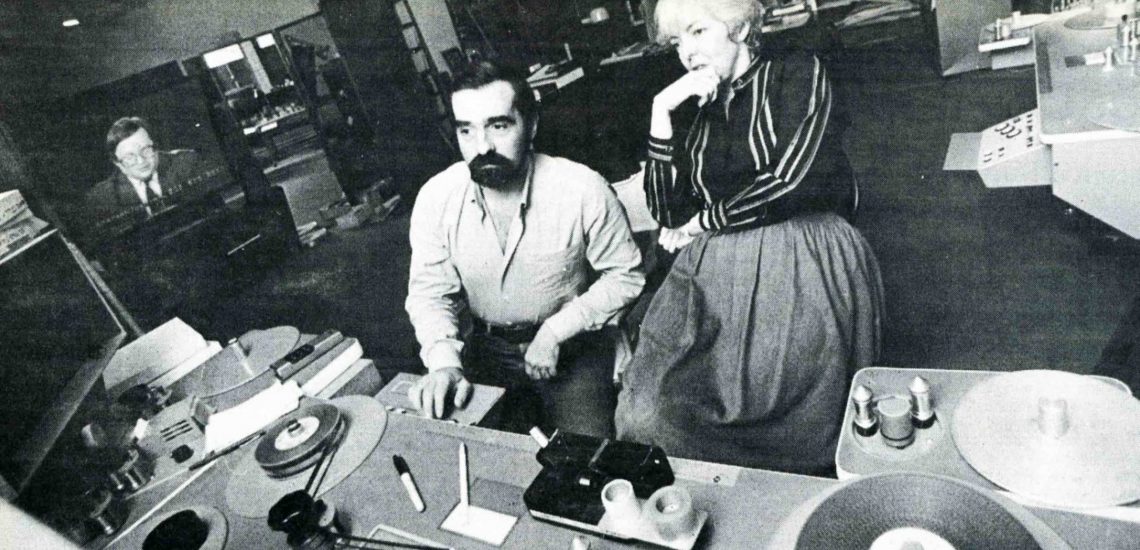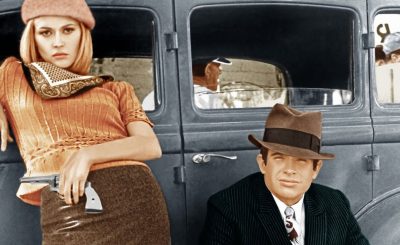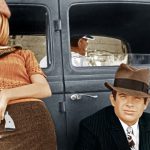Conclusion
The examination of the auteur theory in this dissertation is not conclusive, merely a selection of some of the most influential critical constructs derived throughout the history of film study. Yet the ambiguity and contrasts from one theorist to the next, if nothing else, show that one application of the theory rises no more clearly or justifiably to the surface than any one creative film role rises to the surface of authorship. The notion of film authorship is a complicated one, and this dissertation sought only to re-establish the editor as a potential candidate, if the idea of the auteur must be insisted upon. The issues in simply tossing the idea of the auteur aside are numerous. As has been discussed, it seems to valorise film’s artistry, a fact vital in maintaining a credible study and critique. Its influence in the marketing of cinema is also of great importance, as a medium devoid of financial investment, artistic or not, will not survive. So it seems apparent that the auteur theory, in some form or another, must be applied.
The editor’s part in this idea is what has been predominantly questioned. The overwhelming difference between a metteur en scène and a hommes de cinéma appears to be creative influence, and freedom of expression. In this case, there is no definitive way to cast the editor, in general, in either category. Whilst esteemed editors Walter Murch and Ralph Rosenblum seem to be able to uniquely influence a film creatively, other editors appear only to work upon the vision of the director. In particular this can be argued to be the primary viewpoint attributed to many female editors. However, in between these two examples there lies Sally Menke, of whom Tarantino alludes to a much more stable collaboration. So, in the same way a director may or may not have a certain ‘prestige’, editors can similarly be split into these categories.
Though with prestige there often appears to be a form of arrogance, a jealous protection of one’s own vision in the way the title of auteur may imply. With the advancements in technology to date suggesting the future of editing may lie, for example, in intuitive touch-screen technology, it is not wholly implausible to suggest that the future generation of directors may go the extra mile to protect their vision, and forgo the need for an individual editor by cutting the picture themselves. Conversely, this suggests editors may also make a similar step towards true authorship and direct the pictures they later edit. This brings this dissertation nicely to its original question; can an editor be an auteur? In the current scenario, it appears that multiple authorship favours the editor’s case best. One can only speculate the future, but if technology marches forward as outlined above, it is not impractical to think that film will evolve towards a more natural authorship, and that the next generation of editors will be ‘creating’ films, rather than simply ‘cutting’ them.
Bibliography
Aftab, K. (2009, July 3). Whatever happened to the great American film director? The Independent. Retrieved December 5, 2010, from http://www.independent.co.uk/arts-entertainment/films/features/whatever-happened-to-the-great-american-film-director-1728883.html
Barthes, R. (1981). The death of the author. In J. Caughie (Ed.), Theories of Authorship (pp. 208-213). London: Routledge.
Björkman, S. (Ed.). (2004). Woody Allen on Woody Allen (Rev. ed.). London: Faber and Faber.
Bordwell, D. (2007). Intensified continuity revisited. Retrieved October 22, 2010, from http://www.davidbordwell.net/blog/?p=859
Brown, M. (2010, March 15). ‘Shakespeare’s lost play’ no hoax, says expert. The Guardian. Retrieved March 22, 2011, from http://www.guardian.co.uk/culture/2010/mar/15/shakespeare-lost-play-double-falsehood
Browne, S. E. (2002). Video Editing: A Postproduction Primer (4th ed.). Boston: Focal Press.
Brownlow, K. (1968). The Parade’s Gone By [Electronic version]. California: University Press.
Caughie, J. (1981). Cahiers du Cinéma. In J. Caughie (Ed.), Theories of Authorship (pp. 35-47). London: Routledge.
Collard, C. (2010, April 8). Adaptive Collaboration, Collaborative Adaptation: Filming the Mamet Canon. Adaptation, 3(2), 82-98.
Cutting, J. E., DeLong, J. E., & Nothelfer, C. E. (2010, February 5). Attention and the Evolution of Hollywood Film. Psychological Science. Retrieved November 10, 2010, from http://pss.sagepub.com/content/21/3/432
Darke, C. (2007). The French New Wave. In J. Nelmes (Ed.), An Introduction to Film Studies (4thed., pp. 398-428). London: Routledge.
Dyer, R. (1998). Introduction to film studies. In J. Hill, & P. C. Gibson (Eds.), The Oxford Guide to Film Studies (pp. 3-10). Oxford: University Press.
Eisenstein, S. (1977). Film Form: Essays in Film Theory (J. Leyda, Trans.). San Diego: Harcourt. (Original work published 1949).
Fairservice, D. (2001). Film Editing: History, Theory, and Practice. Manchester: University Press.
Gaut, B. (1997). Film Authorship and Collaboration. In R. Allen, & M. Smith (Eds.), Film Theory and Philosophy (pp. 149-172). Oxford: University Press.
Gessner, R. (1962). Porter and the Creation of Cinematic Motion: An Analysis of “The Life of an American Fireman” [Electronic version]. The Journal of the Society of Cinematologists, 2, 1-13.
Gunning, T. (1991). D.W. Griffith and the Origins of American Narrative Film. Illinois: University Press.
Kael, P. (1963). Circles and Squares [Electronic version]. Film Quarterly, 16(3), 12-26.
Kauffmann, S. (2006). Avid Editing (3rd ed.). Oxford: Focal Press.
Koppelman, C. (2005). Behind the Seen: How Walter Murch Edited Cold Mountain Using Apple Final Cut Pro and What This Means for Cinema. Berkeley: New Riders.
Murch, W. (2001). In the Blink of an Eye: A Perspective on Film Editing (2nd ed). Beverly Hills: Silman-James Press.
Musser, C. (1991). Before the Nickelodeon: Edwin S. Porter and the Edison Manufacturing Company [Electronic version]. Berkeley: University of California Press.
Ohanian, T. A. (1998). Digital Nonlinear Editing (2nd ed.). Boston: Focal Press.
Ondaatje, M. (2002). The Conversations: Walter Murch and the Art of Editing Film. London: Bloomsbury.
Pearlman, K. (2009). Cutting Rhythms: Shaping the Film Edit. Burlington: Focal Press.
Perkins, R., & Stollery, M. (2004). British Film Editors: The Heart of the Movie. London: BFI.
Phillips, P. (2007). Spectator, audience, and response. In J. Nelmes (Ed.), An Introduction to Film Studies (4thed., pp. 143-172). London: Routledge.
Reisz, K., & Millar, G. (1984). The Technique of Film Editing (2nd ed.). London: Focal Press. (Original work published 1953).
Robson, E. (2003). Coen Brothers. London: Virgin Books.
Rosenblum, R., & Karen, R. (1979). When the Shooting Stops…the Cutting Begins: A Film Editor’s Story. New York: Da Capo Press.
Sarris, A. (2004). Notes on the Auteur Theory in 1962. In L. Braudy, & M. Cohen (Eds.), Film Theory and Criticism (6th ed., pp. 561-564). New York: Oxford University Press.
Seger, L. (2003). When Women Call the Shots: The Developing Power and Influence of Women in Television and Film [Electronic version]. Lincoln: iUniverse.
Vogel, C. (1997, October 24). Inside Art. The New York Times. Retrieved March 8, 2011, from http://query.nytimes.com/gst/fullpage.html?res=9D06EEDE103EF937A15753C1A961958260
Walters, B. (2010, September 29). Sally Menke: The quiet heroine of the Quentin Tarantino success story. The Guardian. Retrieved November 16, 2010, from http://www.guardian.co.uk/film/filmblog/2010/sep/29/sally-menke-quentin-tarantino-editor
Watson, P. (2007). Approaches to cinematic authorship. In J. Nelmes (Ed.), An Introduction to Film Studies (4thed., pp. 91-108). London: Routledge.
Wharton, D., & Grant, J. (2005). Teaching Auteur Study. London: BFI.
Wollen, P. (2004). The Auteur Theory. In L. Braudy, & M. Cohen (Eds.), Film Theory and Criticism (6th ed., pp. 565-580). New York: Oxford University Press.
Filmography
Allen, W. (Director). (1969). Take the Money and Run [Motion picture]. United States: Rollins-Joffe Productions.
Allen, W. (Director). (1971). Bananas [Motion picture]. United States: Rollins-Joffe Productions.
Allen, W. (Director). (1977). Annie Hall [Motion picture]. United States: Rollins-Joffe Productions.
Apple, W. (Director). (2004). The Cutting Edge: The Magic of Movie Editing [Motion picture]. United States: A.C.E.
Bigelow, K. (Director). (2002). K-19: The Widowmaker [Motion picture]. United States: First Light.
Brooks, M. (Director). (1968). The Producers [Motion picture]. United States: Crossbow.
Cohen, J., & Cohen, E. (1984). Blood Simple [Motion picture]. United States: River Road Productions.
Coppola, F.F. (Director). (1979). Apocalypse Now [Motion picture]. United States: Zoetrope.
Ephron, N. (Director). (1998). You’ve Got Mail [Motion picture]. United States: Warner Bros.
Godard, J. L. (Director). (1960). Breathless [Motion picture]. France: Les Productions Georges de Beauregard.
Griffith, D. W. (Director). (1911). The Lonedale Operator [Motion picture]. United States: Biograph Company.
Kubrick, S. (Director). (1980). The Shining [Motion picture]. United States: Warner Bros.
Kubrick, S. (Director). (1987). Full Metal Jacket [Motion picture]. United States: Natant.
Lloyd, S. (Director). (1935). The Mutiny on the Bounty [Motion picture]. United States: MGM.
Lubitsch, E. (Director). (1940). Shop Around the Corner [Motion picture]. United States: MGM.
Lucas, G. (Director). (1973). American Graffiti [Motion picture]. United States: Universal.
Marnua, F. W. (Director). (1922). Nosferatu [Motion picture]. Germany: Jofa-Atelier Berlin-Johannisthal.
Mendes, S. (Director). (2005). Jarhead [Motion picture]. United States: Universal.
Minghella, A. (Director). (1996). The English Patient [Motion picture]. United States: Miramax.
Minghella, A. (Director). (2003). Cold Mountain [Motion picture]. United States: Miramax.
Porter, E. S. (Director). (1903). The Life of an American Fireman [Motion picture]. United States: Edison Manufacturing.
Spielberg, S. (Director). (1975). Jaws [Motion picture]. United States: Zanuck/Brown Productions.






Leave A Reply